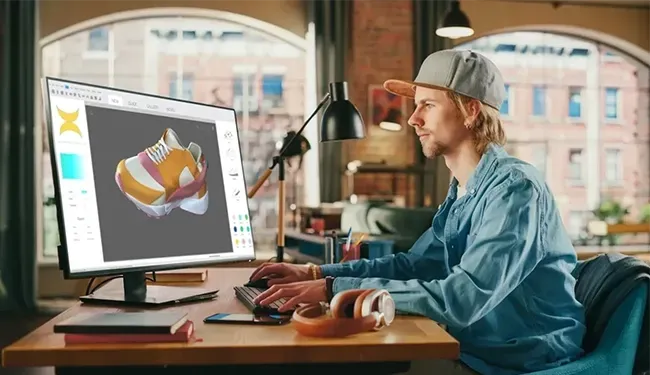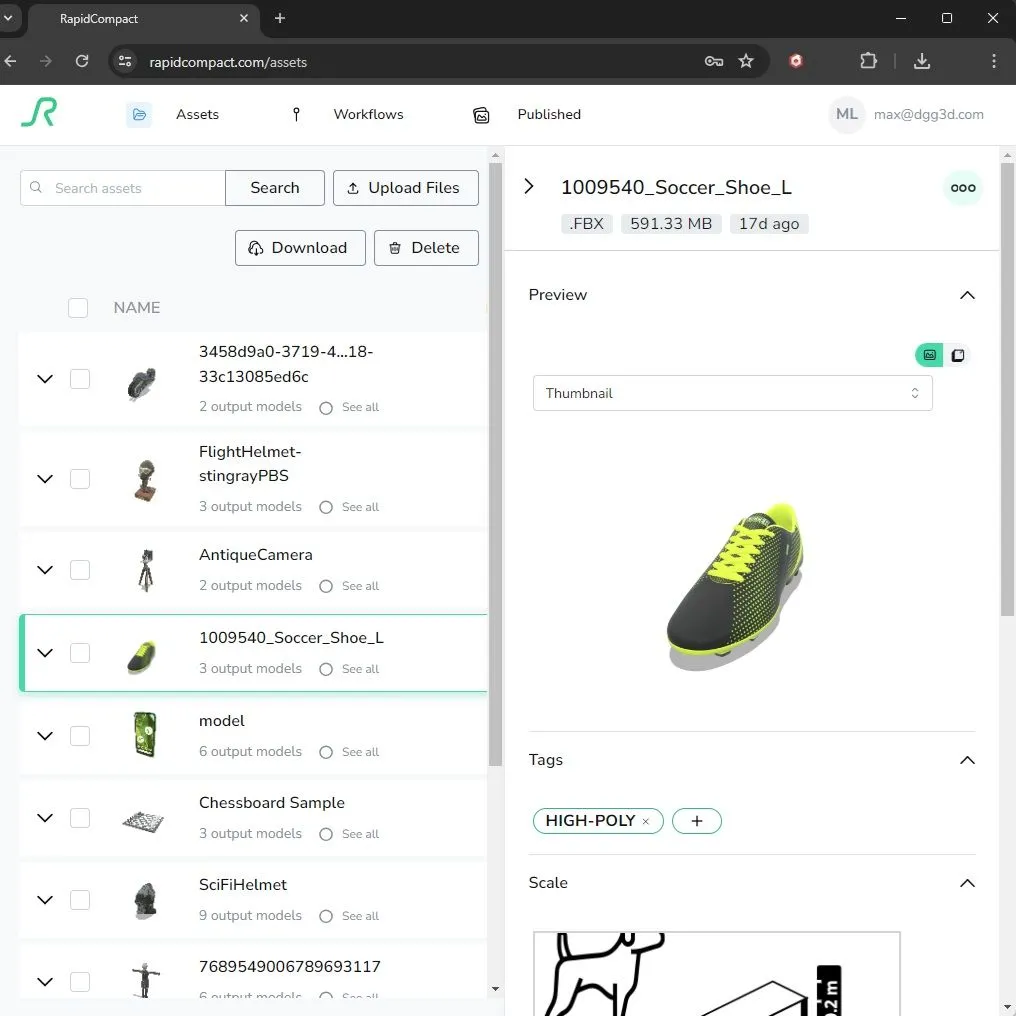
What is a low poly 3D model and how to create one?
Table of Contents
What is a low poly model?
Low poly models are the result of either low poly modeling or the reduction of a high poly model.
Low poly modeling is a technique used in 3D computer graphics, animation, and games to create simplistic, stylized representations of objects or environments. It involves using a minimal number of polygons to construct models, resulting in a geometrically efficient and visually distinct style.
Why are low poly models needed and how are they used?
| Use-Case | Why are low poly models needed |
| Gaming / Game Engines | LODs, complex scenes require optimized poly count, |
| XR (AR/VR) | Current Devices and HMD require very optimized 3D models and scene geometry, VR especially requires 90 fps/s |
| 3D on the Web | Mobile Devices require very optimized 3D models |
| VFX | As Proxy meshes for complex animated scenes |

How to generate a low poly model in 3 simple steps
Steps to create a low poly model from a high poly model:
- Make sure a high poly 3D model is present (created from either 3D Scan, 3D Sculpting or High Poly Modeling, etc.)
- Reduce the geometric detail by applying decimation, remeshing or retropologize the high poly model to get your low poly model
- In case you want to enhance the quality and detail of your resulting low poly model consider normal map baking and occlusion map baking, and enhance your model with PBR materials
Different techniques to create low poly models:
- 3D mesh optimization: Process of making an input mesh more suited for a target application – typically involves the reduction of polygon count or re-defining the topology.
- Mesh Decimation: Simplifies polygon based (tessellated) geometry by removing detail through edge collapsing or a similar approach, resulting topology is usually inherited from original topology
- Remeshing: In general, the process of remeshing tries to compute a better discrete representation of the given underlying surface, the resulting topology is usually unrelated to original topology, examples for common remeshing techniques are shrink-wrapping or feature-preserving remeshing
- Quad-Remeshing: Converts a mesh with arbitrary topology into one composed of quadrilateral elements. This process aims to improve the mesh's regularity, which can lead to benefits such as smoother deformations, better subdivision surfaces
- Retopology: Process of creating a new surface topology for a 3D model while preserving its underlying shape, involves reconstructing or optimizing the topology to improve rendering performance, appearance or preparing it for animation or further editing
- Subdivision Surface Modeling: Starts with basic mesh shapes which are progressively subdivided and smoothed to create intricate surfaces, allowing for more flexibility and topological control for 3D artists, this technique is especially useful with digital animations
Meet the Author

Julian
Head of 3D Solutions & Co-Founder
Julian-Alexander Neagu is a real-time 3D graphics enthusiast with 10+ years of industry experience. He is co-founder of DGG and works with the company since 2018 as Head of 3D Solutions. Julian started his 3D journey working on indie games before switching to XR. After being part of multiple award winning productions, such as German AR music video: Tunnel AR, the underlying 3D graphics technology sparked an interest in him. Today Julian guides the development of several automation efforts to help making 3D real-time content more accessible to end-users and industry clients alike.